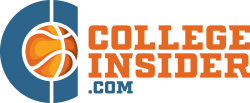The Economics of College Sports: Balancing Athletics and Academics

The college sports sector is a complex intersection of athletics, academics, and economics. Universities strive to balance the benefits and challenges of running extensive athletic programs while maintaining their academic missions. College sports, particularly football and basketball, are multi-billion dollar industries in the United States. They generate substantial revenue through ticket sales, broadcasting rights, merchandise, and sponsorships.
The financial windfall can provide significant benefits to universities, such as increased visibility, higher enrollment rates, and enhanced alumni engagement.
Financial Impact on Institutions
College sports represent a significant financial investment for many institutions, with revenue streams primarily derived from ticket sales, media rights, sponsorships, and merchandise.
Additionally, the best betting apps cover college sports tournaments, offering specific promotions around them, further enhancing revenue generation potential. These diverse revenue sources enable schools to enhance their athletic programs with state-of-the-art facilities, attract top coaching talent, and increase their visibility. However, the distribution of these funds often raises questions about the balance between athletics and academics.
High-profile sports like football and basketball can generate millions of dollars. For instance, the Southeastern Conference (SEC) schools boast massive stadiums, often filled, contributing significantly to their revenue. Coaches in these leagues also command high salaries, with averages reaching $4.1 million annually.
Despite this, many argue that the financial benefits of athletics do not always translate to academic advantages, with most schools needing to subsidize their sports programs through student fees and other funds.
Academic Spending Versus Athletic Spending
A major consideration in the economics of college sports is the significant difference in spending between athletic and academic programs. Institutions often allocate substantially more resources per athlete than per non-athlete student. The American institutes for Research study revealed that athletic departments spend three to six times more per athlete than the average student.
However, there are several reasons why colleges might justify this higher expenditure on athletic students. Sports programs enhance the institute’s visibility and reputation. Successful athletic programs can attract national attention, leading to increased applications, higher enrollment, and greater alumni donations.
Moreover, student-athletes face intense physical and mental challenges, requiring advanced training facilities, top-tier coaching, and comprehensive healthcare services to perform at their best.
The Role of Alumni and Donations
Alumni contributions play a crucial role in sustaining college sports programs. Victories in sports can drive increased donations to athletic departments, although it is unclear if these successes boost alumni giving to academic programs.
For example, at the University of Florida, sports events attract nearly a million attendees annually, generating substantial revenue. However the challenge remains in balancing these financial incentives with the institution’s academic priorities.
Strategies for Balancing Academics and Athletics
Effective time management and support systems are essential for student-athletes to balance their dual responsibilities.
Key strategies for managing this balance include creating structured daily schedules, utilizing academic resources like tutors and study groups, and setting realistic goals.
Communication with coaches and professors is crucial to addressing scheduling conflicts and ensuring academic commitments are respected.
For instance, successful student-athletes often prioritize their tasks based on deadlines and importance, allocate specific times for study and practice, and seek support when needed.
Long-Term Benefits and Career Preparation
The focus on short-term financial gains should not overshadow the long-term benefits for student-athletes. Colleges and universities should emphasize developing transferable skills, educational opportunities, and career preparation. By providing resources for personal growth, leadership development, and career guidance, institutions can support student-athletes holistic well-being, preparing them for success beyond their athletic careers.
Programs that integrate career planning, academic support, and athletic commitments help student-athletes build a strong foundation for their future. It benefits the individuals involved and enhances the institution's reputation as a place where academic and athletic excellence coexist.
Economic Justifications for Athletic Programs
Proponents of college sports highlight several economic benefits. Successful athletic programs can elevate a university's profile, attract higher enrollment, and increase alumni engagement and donations.
Moreover, athletic programs can foster community and school spirit, which are valuable intangible benefits. These elements contribute to a vibrant campus life and can enhance students' overall college experience.
Conclusion
The economics of college sports involve complex trade-offs and strategic decisions. While athletics can benefit universities substantially, it is crucial to strike a balance that supports athletic success and academic integrity. By thoughtfully addressing the financial, administrative, and academic challenges, universities can create a more equitable and sustainable model for college sports.


